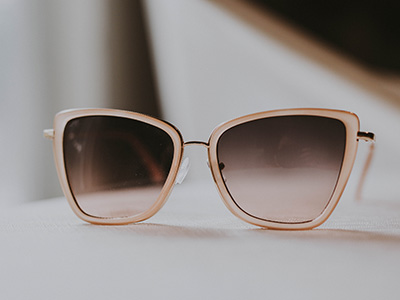Protect Yourself and Others by Lowering Risks of Exposure
As medical professionals, the team at Abrams Eye Institute understands that one of the important precautions we can all take to slow the spread of COVID-19 coronavirus is to avoid touching the face and the eyes (as well as your nose). Doing this lowers our personal risk of contracting the virus, and the potential of giving the virus to someone else.
As regular people, we know that touching our faces and eyes are subconscious habits that are difficult to break. These are patterns that have been built for decades of our lives and are not easily broken. With that in mind, we wanted to offer a few tips on how to make using your hands something you notice more, to help you work towards touching your face and your eyes less frequently.

Stop touching your face and eyes to stay healthy.
Wear Your Glasses – If you wear contact lenses, and own a pair of glasses, it’s a good idea to leave the contacts in their cases for a while and wear your glasses. With contacts, irritants can often get in your eyes, and gently rubbing the edges and corners of the eyes to remove them is something everyone wearing lenses does often without noticing. With the allergy season now upon us, and ramping up with every new blossom on the trees, irritants are only going to increase. It’s also more difficult to get to the eyes when you have to get through your glasses, which is an added benefit of wearing glasses rather than contacts.
Wear Your Sunglasses – As the sun comes up earlier in the morning and goes down later at night, make sure when outdoors to wear properly sunglasses. This will prevent you from rubbing your eyes when faced with sudden bright light exposure from the sun, in addition to forming another barrier between your eyes and your hands. As with regular prescription glasses, make sure to keep your sunglasses clean and wash them even more regularly than you did before.
Stay Eye-Dropped/Moisturized/Lip Balmed/Glossed – A key trigger for touching our faces comes from eyes, faces or lips that are dry. Stay ahead of the dryness by using plenty of eye drops, facial moisturizer and lip balm/gloss regularly. Always apply these products after you’ve thoroughly washed your hands.
Wear Gloves When You Leave Home – You don’t necessarily have to wear medical grade gloves when covering your hands. The idea is just to have something on your hands that makes touching your face and eyes something more noticeable. Next time you go for a walk (while practicing social distancing), try putting on some gardening gloves. You don’t have to wear them the entire time, but long enough to start thinking more about your hands and keeping them off you face and away from your eyes.
Give Your Hands Some Work – While at home, you can do simple things such as bridge your hands together, or twiddle your thumbs, to shift focus on your hands, where they are and what they’re doing. You can also get a (clean and unshared) tennis or golf ball and rotate it in your hands or pass it from hand to hand. The idea here is to keep your hands busy and below your face, while building habits of keeping them away from your face and eyes.
Abrams Eye Institute Reminds You to Keep Your Hands Clean
As you keep your hands away from your face and your eyes, it’s important to keep them clean by washing them regularly. While the onset of COVID-19 has made people more aware of the benefits of regularly washing hands, it’s still a habit that could benefit from some help to properly form. A good way of doing that is by setting alerts on your phone, with each hour offering a ping or a buzz to remind you to watch your hands on a more regular basis.
As per health experts, Dr. Jack Abrams and the rest of the Abrams team urges you to practice social distancing (stay six feet away from other people), stay home whenever your can, cover your coughs and sneezes with the inside corner of your elbow and be as safe as possible in all circumstances.
Abrams Eye Institute Can Help with Eye Emergencies
The team at Abrams Eye Institute is currently only seeing patients for eye emergencies. Eye emergencies include sudden loss of vision, severe eye pain, curtain-like disappearance of vision, experiencing flashers or floaters, seeing black spots or flashes of light, seeing halos or rainbows around light, loss of peripheral (side) vision, sudden hazy or blurred vision. If you are suffering from any of these conditions, please call our clinic at 702-304-9494 to see if we can help. If your conditions are bad or are worsening, as always, please call 911.
The content on this blog is not intended to be a substitute for professional medical advice, diagnosis, or treatment. Always seek the advice of qualified health providers with questions you may have regarding medical conditions.

